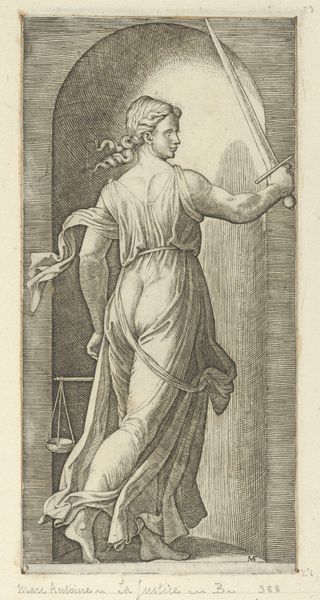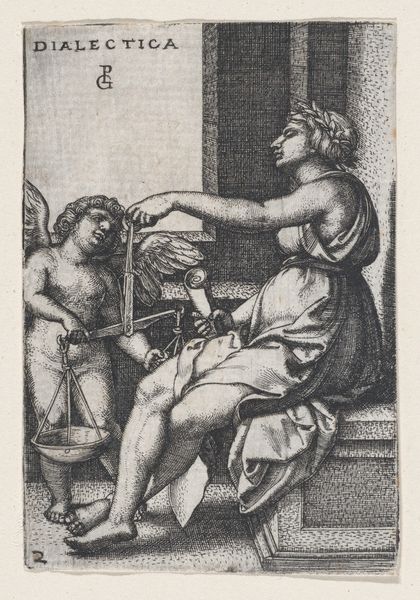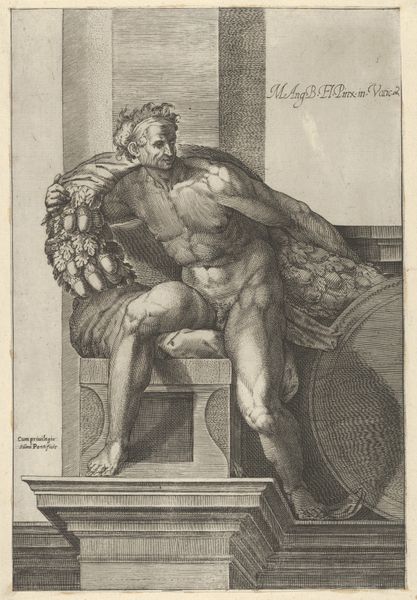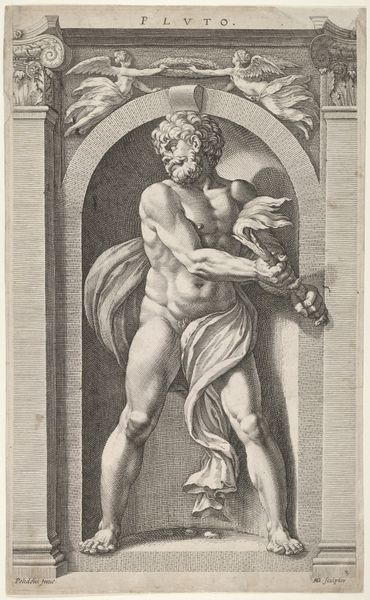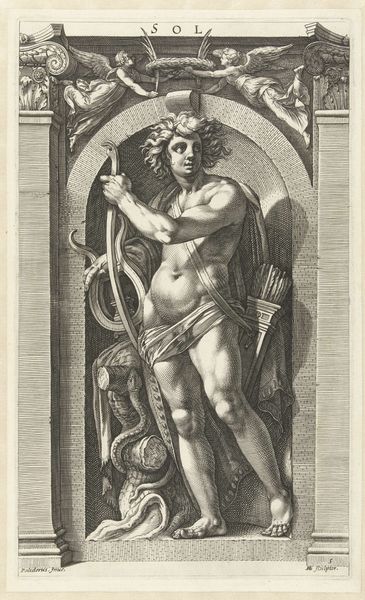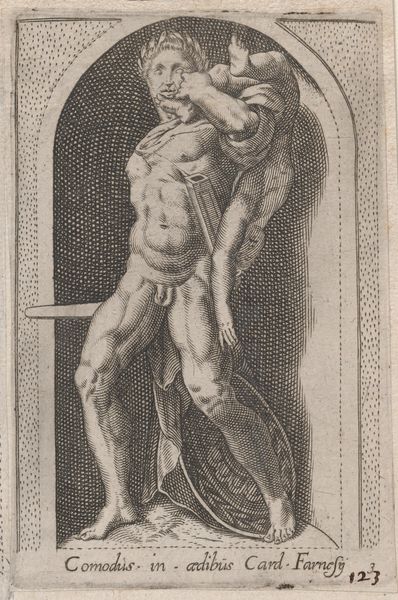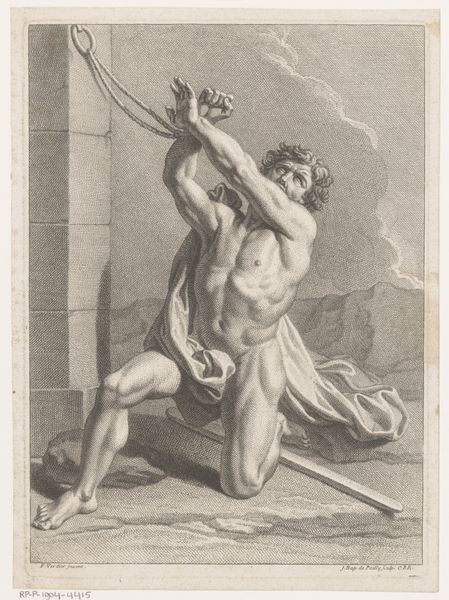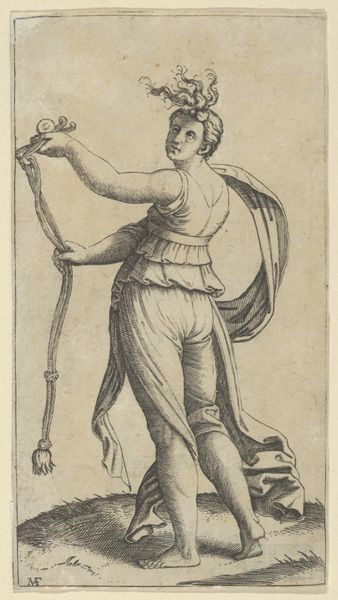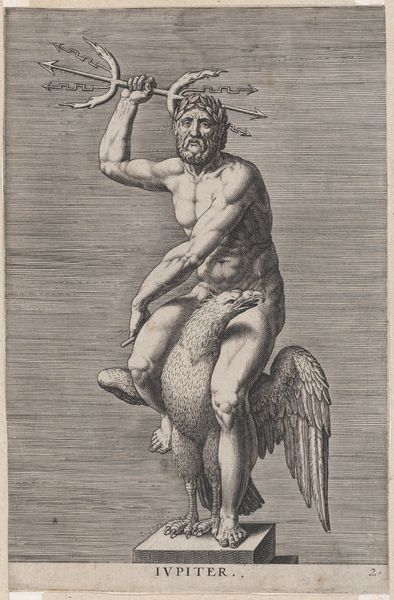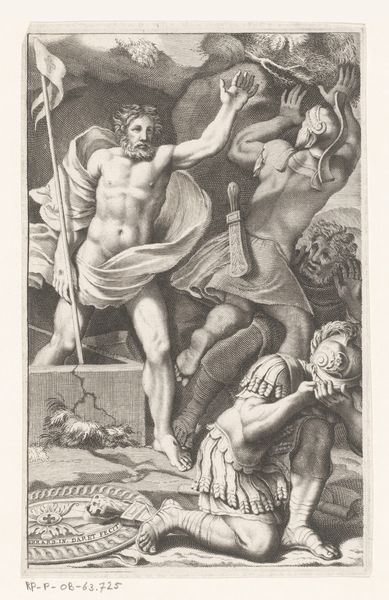
A Roman emperor sitting in a niche holding a sceptre in his raised left hand and a globe in his right hand 1495 - 1539
0:00
0:00
drawing, print, engraving
#
portrait
#
drawing
# print
#
figuration
#
history-painting
#
italian-renaissance
#
engraving
Dimensions: Sheet: 4 5/16 × 3 1/8 in. (11 × 8 cm)
Copyright: Public Domain
Curator: This engraving, rendered in a monochrome palette, depicts “A Roman emperor sitting in a niche holding a sceptre in his raised left hand and a globe in his right hand” as imagined by Marcantonio Raimondi, sometime between 1495 and 1539. It resides here at the Metropolitan Museum of Art. Editor: The textures jump out at me immediately. The rigid pleats of his skirt against the smooth, almost polished, globe—you can practically feel the contrast. It's tactile, even though it’s a print. Curator: Indeed. Observe how Raimondi uses hatching and cross-hatching to modulate tone and convey form. The density of the lines creates areas of shadow, giving volume to the figure and depth to the niche in which he is posed. The textures emerge as much from the graphic manipulation of the lines as from any attempt to render a direct, material transcription. Editor: But there’s an implicit materiality! The labor involved in creating those lines—etching the plate, the physical act of printing—it’s present, demanding a sort of recognition. Consider, too, how that act of production affected its dissemination, making imperial representation available more widely. Curator: A vital point. Its replication and distribution certainly granted it broader influence. Notice the controlled composition. The figure's pose, almost theatrical, draws our eye upwards toward his face and the symbols of power he grasps, reinforcing his authority. He’s enclosed in the recessional space, making this character’s image an archetype. Editor: Exactly, it is so much about making visible—making public—something previously accessible to very few. A singular object into something reproducible. He looks less triumphant and more weighed down somehow, seated on the drapery that has the most visually dense etching pattern. Power as a tangible, sometimes burdensome, substance. Curator: An intriguing interpretation. It brings us back to materiality, in a way—the materiality of power, its weight and visibility within a specific historical context. Editor: So in its production, its design, we are seeing and participating in its message. I never fail to be in awe when understanding those systems of circulation through historical artistic productions.
Comments
No comments
Be the first to comment and join the conversation on the ultimate creative platform.


